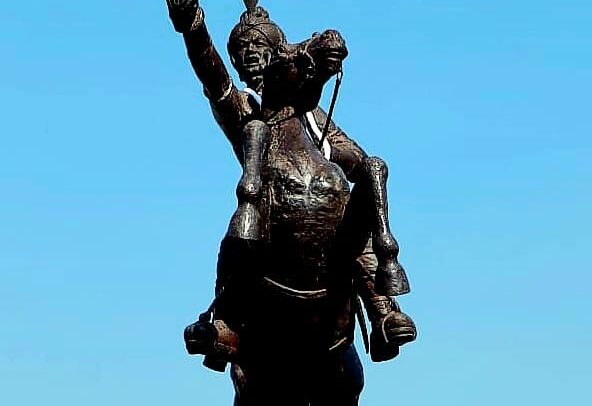Imphal: (Sh. Ajit,Journalist ) Pain and agony during the “Seven Years Devastation” (Chahi Taret Khundakpa) (1819–1826) are
recurrently remembered by the Manipuris to this day. “Seven Years Devastation” (Chahi Taret
Khundakpa) is one of the acid tests the nation went through. Many able males were killed while
defending the pride of the people; many women and children were tortured by the enemies while
raiding the Manipuri villages; and many thousands were taken to Burma as prisoners of war who
were used in their military and social affairs. The devastation (Khundakpa) had far-reaching
consequences for the social and political life of the Manipuris in the post- Devastation (Khundakpa)
period. There was an acute demographic imbalance in the state, and the sex ratio of the people was
highly disturbed. The demographic facts affected other aspects of the political and social sphere.
The Devastation (Khundakpa) period shaped a new sense of nationalism and a new spirit of national
liberation. The guerrilla warfare of Heerachandra and the national liberation war of the two cousins,
Gambhir Singh and Narsing, are the translations of the new sense of nationalism shaped during the
Burmese occupation. The brutality of the occupation was challenged by the hundreds of brave
Manipuri heroes; finally, Manipur could regain her lost sovereignty. This was the substance of a
struggle for national liberation.
The fighting against and fighting back the brutality of the occupied army was celebrated by the Pan
Manipuri Youth League (PANMYL), which was established in 1968, as National Liberation Day on
January 9. The celebration started in 1975 in Manipur, and since 1976, the day has been celebrated
in Assam and Tripura.
After that, the United People’s Front of Manipur (UPF) celebrated the day as National Reconciliation
Day since 2001. This year, the Manipur Youth League (MAYOL) starts to celebrate the day as
National Regeneration Day. All these celebrations are celebrations of the new sense of nationalism
and the spirit of the national liberation struggle during the Seven Years Devastation (Chahi Taret
Khundakpa). Fight till victory; fight till the last enemy is driven out. Understand the value of a
civilised life; understand the value of a free man. Do not ask the enemy to safeguard us; our destiny
will be shaped by our determination. In short, we will not live as we did during devastation
(Khundakpa).
Our lives were subjected to the ordeals of the gas chamber (as published in Resistance, 1976); the
people were forced into mass exodus to neighbouring countries. The enemy tried to destroy every
inch of the kingdom of Manipur. Howsoever the enemy was powerful, whatever the tricks they used
to torture the brave and high-spirited people, the nation could regain its lost sovereignty because of
the tireless efforts of the brave hearts.
The nation was once again caught in the web of world colonial power. The political game plan of
British colonialism betrayed this kingdom and her people by entering into the Treaty of Yandaboo
and the Treaty of Kabaw Valley with no authority. Because of the betrayal, Manipur suffered an
irreplaceable loss—the loss of Kabaw Valley—in spite of certain compensation, tax, or whatever it
may be. The day the treaty on Kabaw Valley was signed without the consent of Manipur, King Gambhir Singh died. The day was January 9. The loss of Kabaw Valley was unbearable pain to the
hearts of Manipuri people.
Today, Manipur salutes the high spirit of national liberation and keeps up the agenda of national
reconciliation, and the people of Manipur promise in one voice for national regeneration. We love
Manipur, free from evil forces and corrupt minds.


